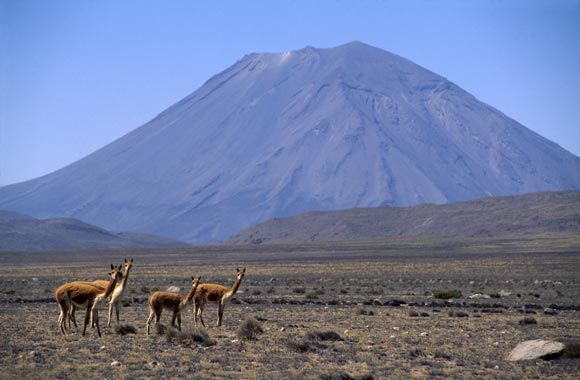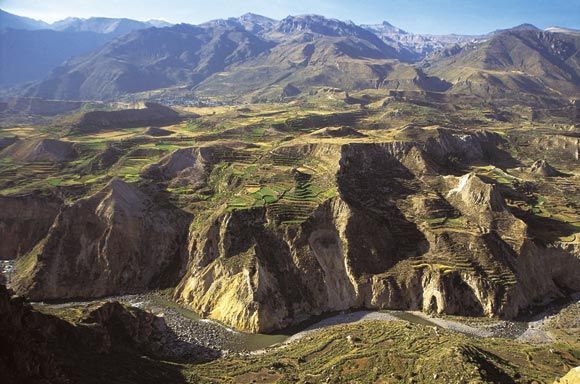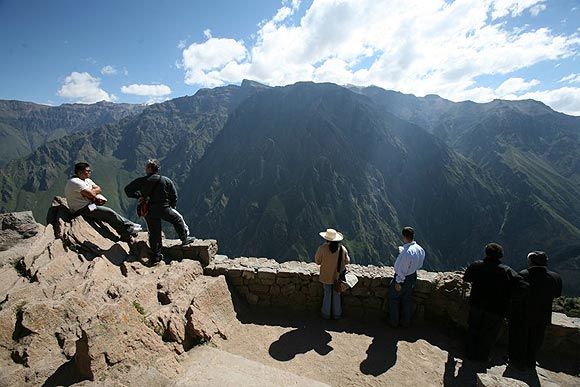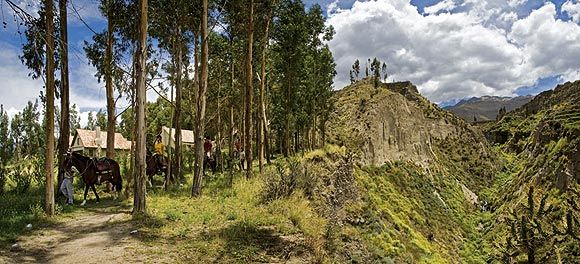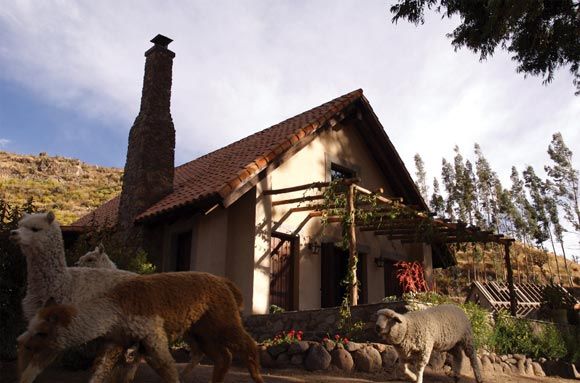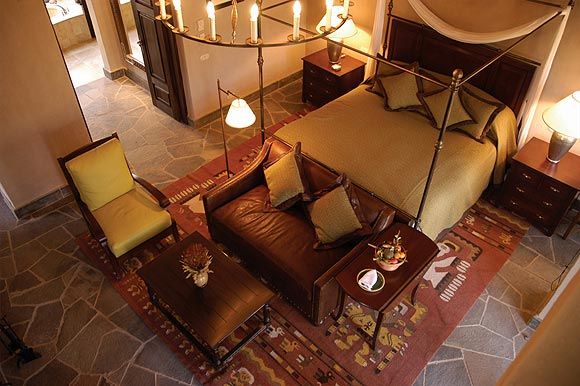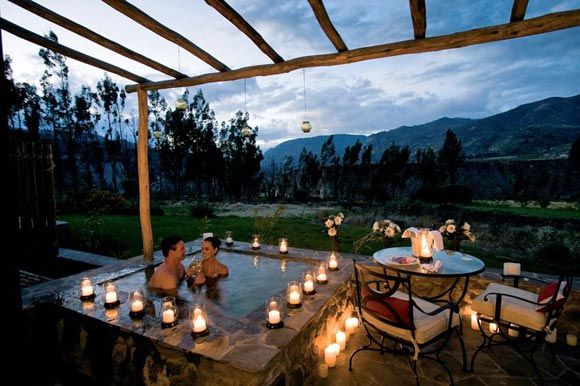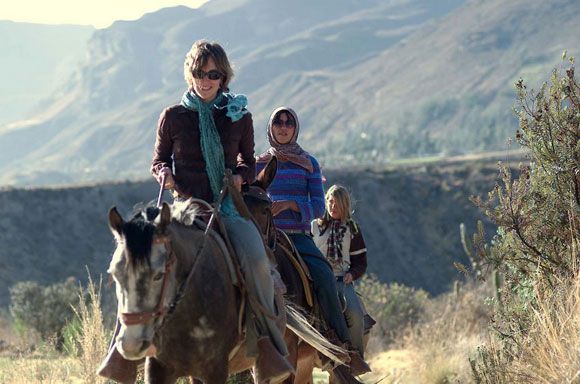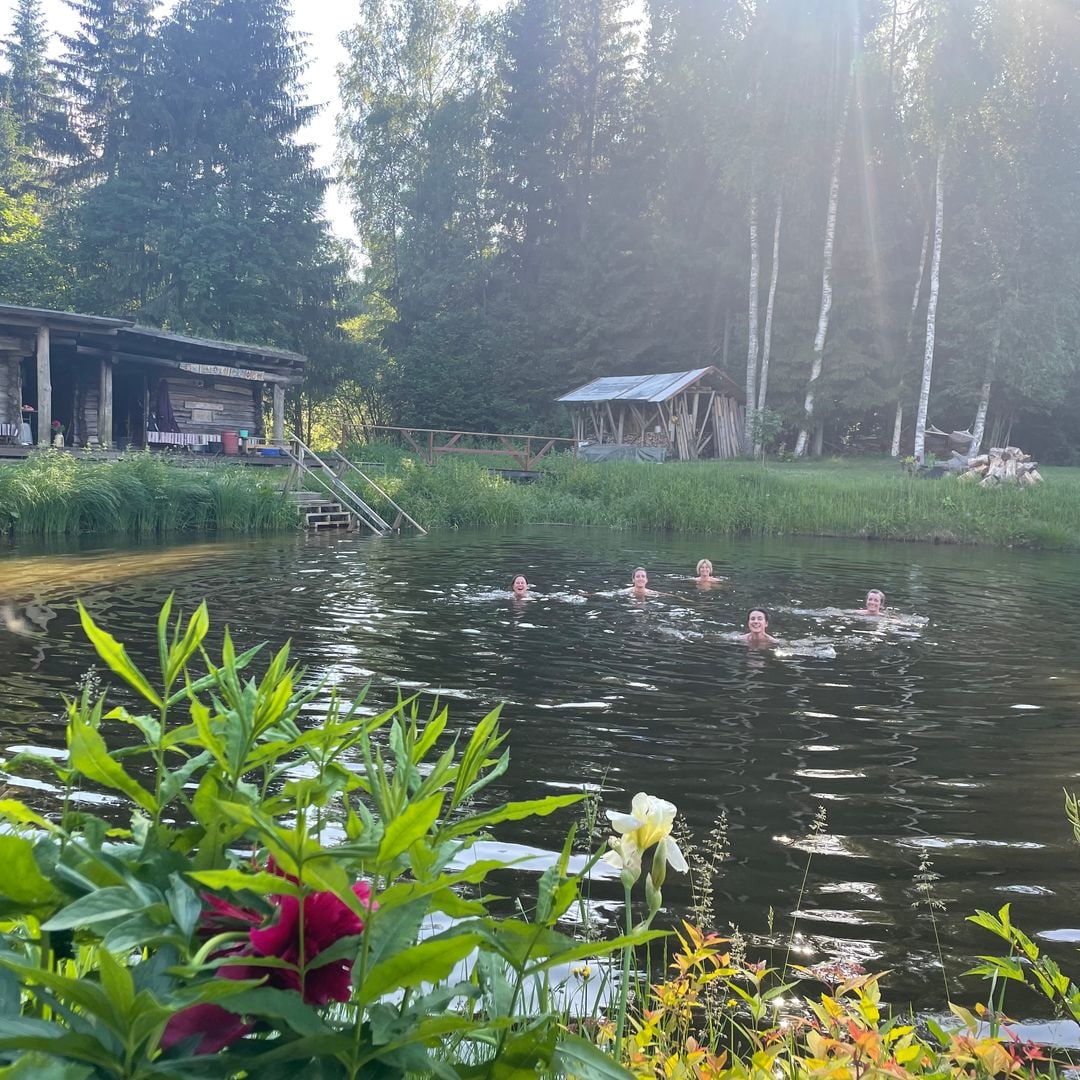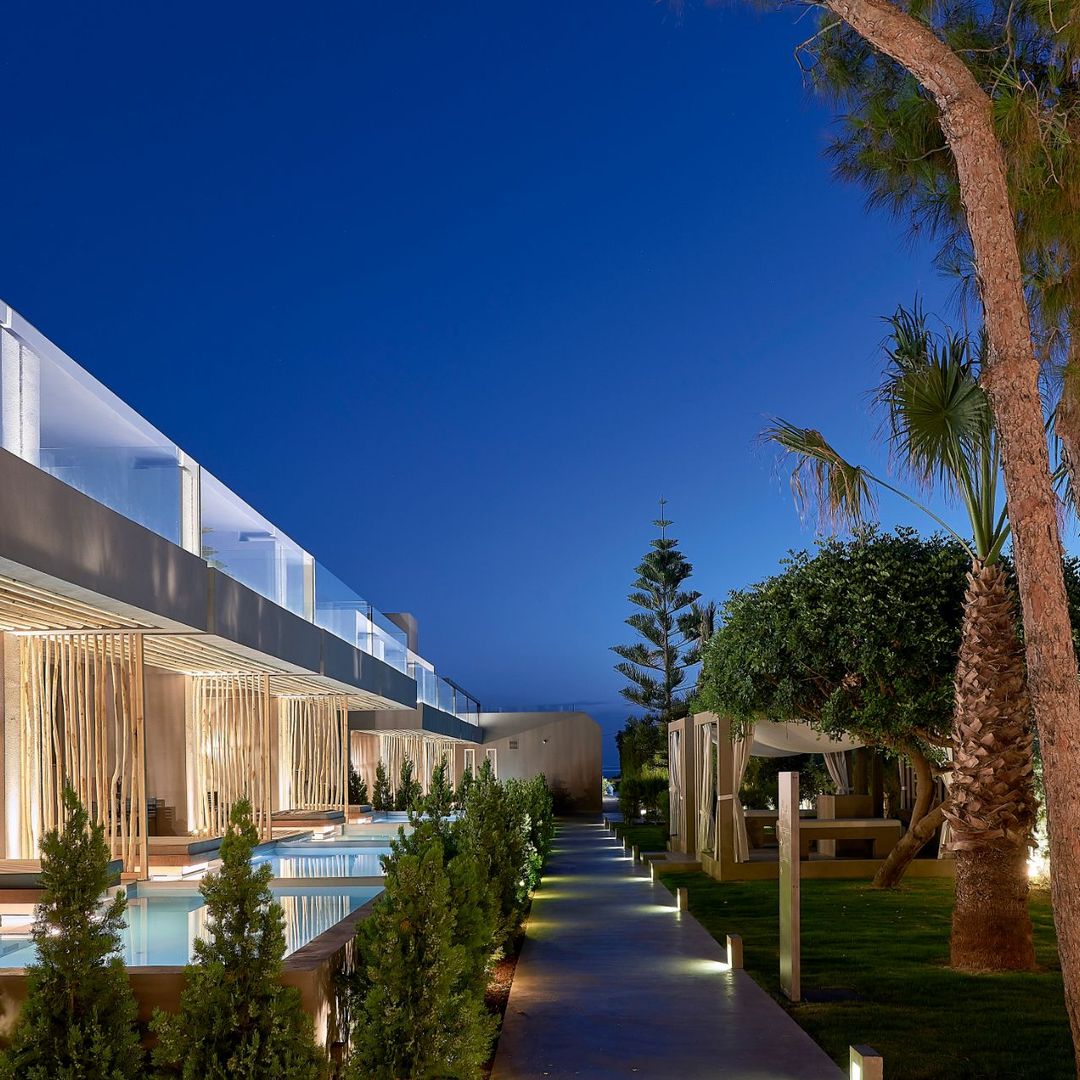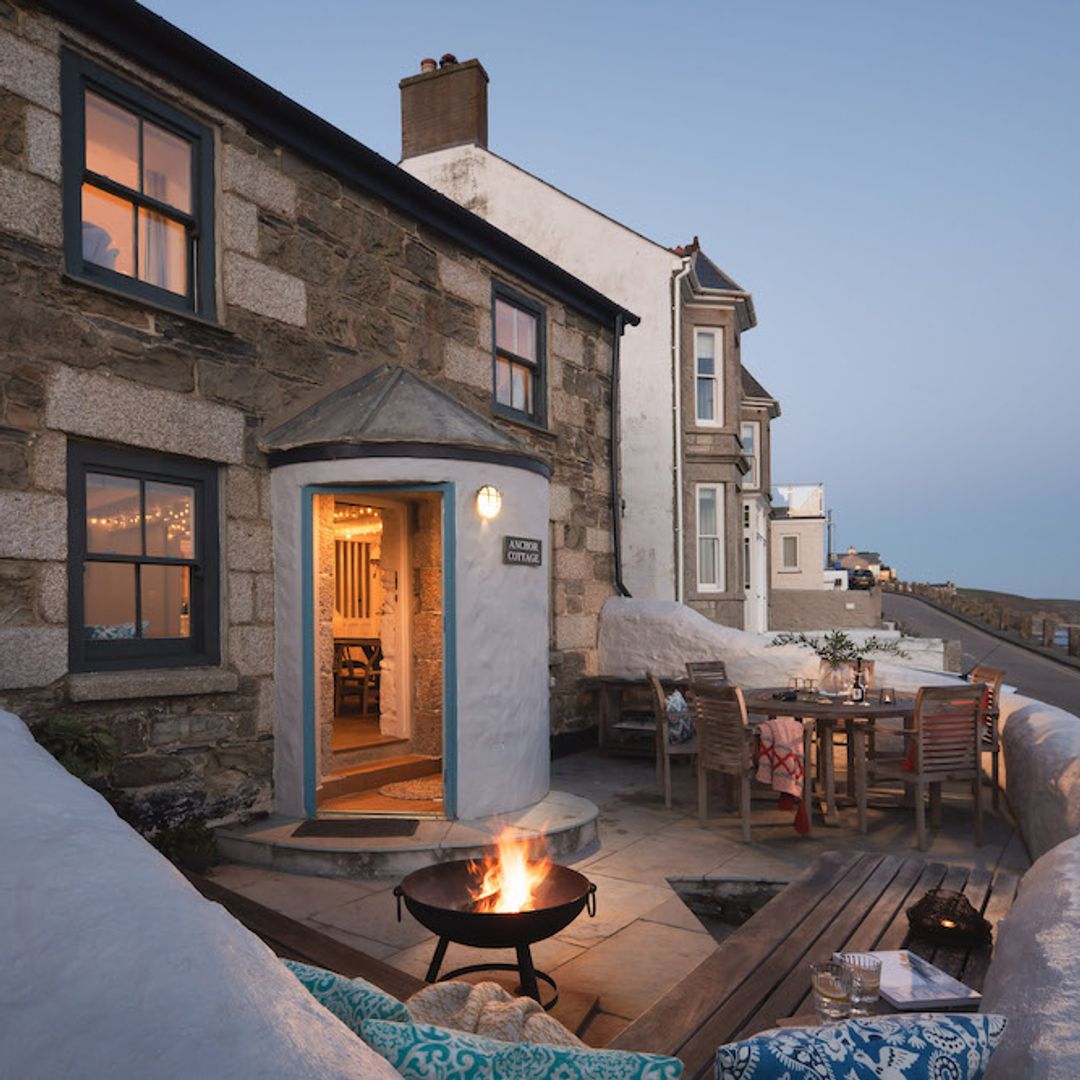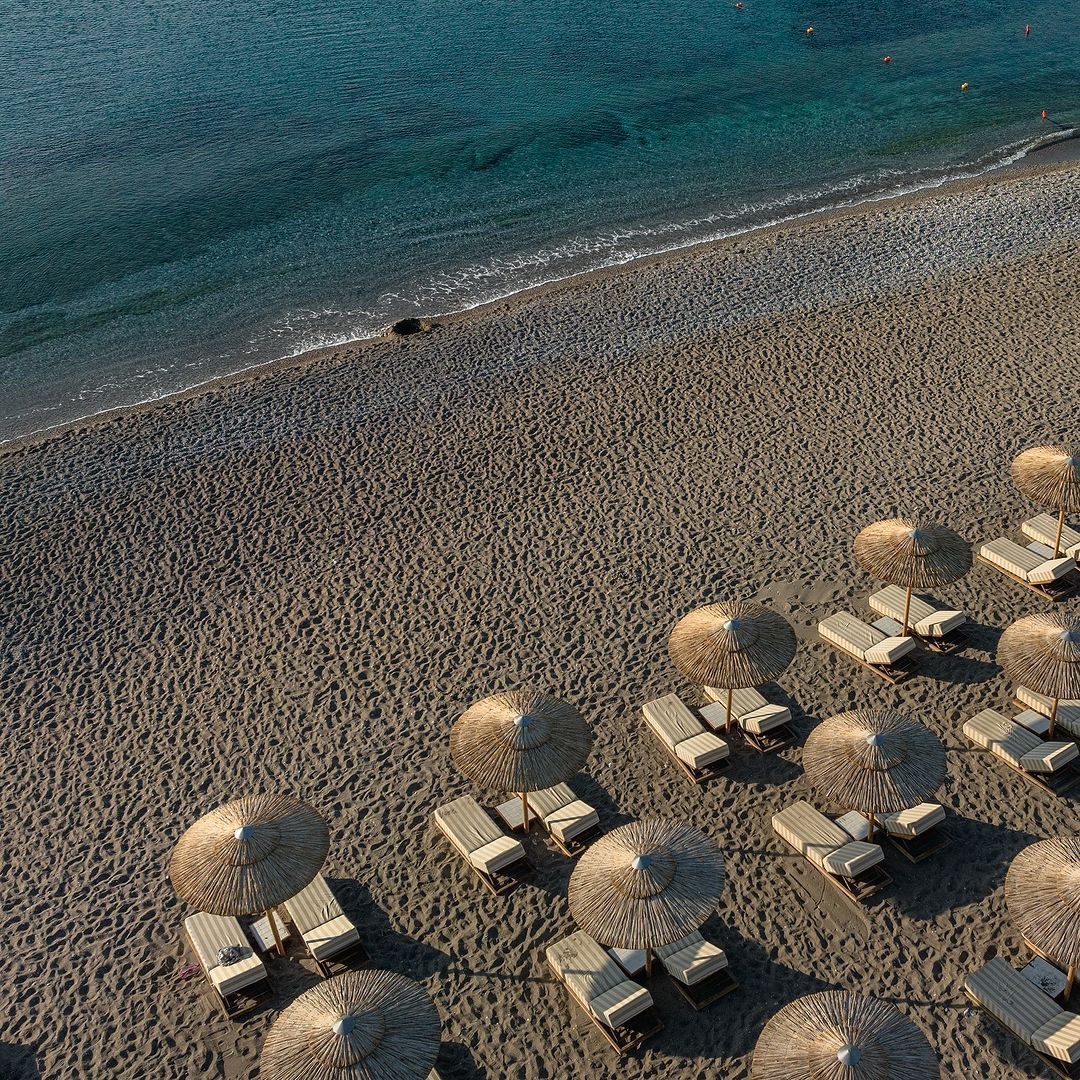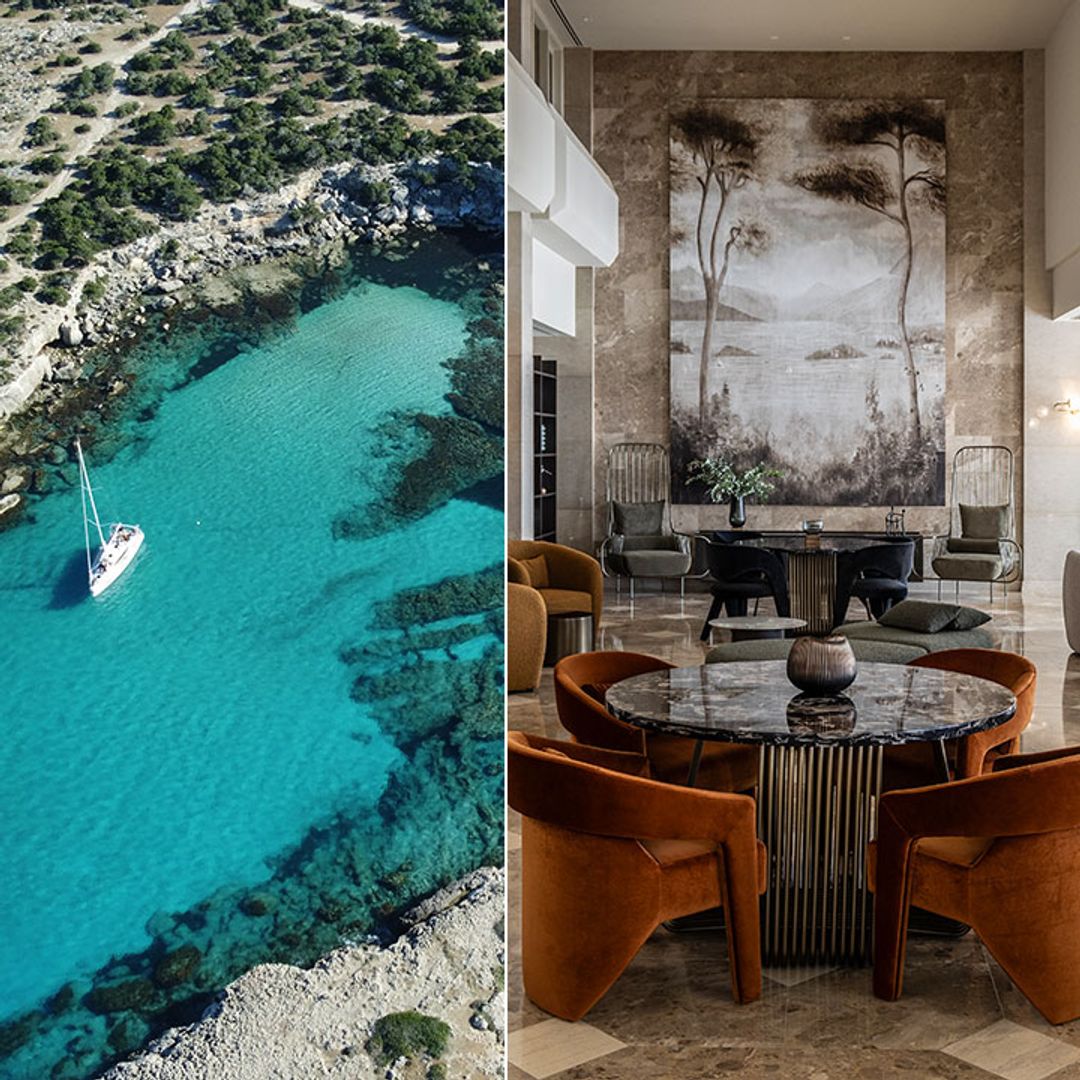The condor's longevity may explain why the Incas believed the birds to be immortal. One popular legend tells that when a condor starts to feel old, it will commit suicide by launching into flight from one of the highest peaks and then simply folding its wings and dropping to its death on the rocky cliffs, only to be reborn again. The bird is important to other Andean civilisations, including the Collaguas and Cabanas who settled the lands of southern Peru long before the Incas. Medicinal powers have been attributed to its bones and organs, and it is a symbol of power and health.
From Arequipa, the road to the Colca Canyon is a real roller-coaster ride complete with potholes, but offers breathtaking views at every point. The route is watched over by volcanoes that rise to over 6,000 metres and flanked by lunar-style landscapes where alpaca and vicuna roam, the latter animals being the source of the world's softest and most expensive wool.
The valley is adorned on both sides by zigzag routes that once were followed by the caravans of llamas crossing between the Altiplano - the high plains - and the Pacific. It is dotted with colonial churches built after the arrival of the Spanish by Dominicans and Franciscans in key towns as Chivay, Yanque, Maca, Pinchillo, Cabanaconde, Lari and Coporaque; ancient barns continue to be used to store the crops that still grow on farming terraces built long ago by the Incas; primitive adobe villages are overlooked by the snowy peaks of the volcanoes Hualca Hualca and Ampato, and markets are held where Collagua and Cabana women, clearly identifiable by their colourful costumes and hats, sell handcrafts and fabrics of their own making. But the most striking thing about the valley is the stunning landscape, here, where the land is cleft dramatically in two, resulting in the second deepest gorge on earth, over four thousand metres, more than twice as deep as the Grand Canyon.
Lords and masters of the Colca Canyon are the condors; these huge creatures can weigh up to twelve kilos and their wingspan reaches over three metres wide. They nest in the red rocky walls of the canyon and use the thermal currents that flow from the gorge to rise high in the skies, often gliding for long periods without a single movement of their vast wings.
In the early morning, or at dusk, especially at the appropriately named Cruz del Condor viewing platform, visitors await the birds' appearance and marvel at the power and majesty of their flight. But their presence isn't limited to specific times and a single place, and, occasionally, as if by a miracle, one of the mysterious and elusive creatures out in search of food, will appear unannounced above the heads of a fortunate few walking between valley villages or riding this most rugged of landscapes.
PRACTICAL TIPS
Condor sightings
Condors, of which it is estimated that only around 6,200 remain across the planet, inhabit many areas of the Andes, including the coast. One of the places where they are most likely to be sighted is the Colca Canyon, where about fifty make their homes. The dry season between April and November, is usually the best time to see them. Sightings cannot be guaranteed, but usually occur early in the morning or late afternoon, and the most spectacular location to to try your luck is the Cruz del Condor view point
Where to stay
Just over two years ago, the Orient Express group opened the most luxurious accommodation on offer in the region: the Casitas del Colca. This score of highly stylish chalets each include fireplace and individual pool from which to admire the stunning valley landscapes. The resort has a spa offering all sorts of treatments, from a beauty ritual to a massage intended to alleviate the effects of altitude sickness; there's also a wide range of activities available: hiking, fishing, cycling and riding. More unusually, there's a chance to participate in a cookery class using organic ingredients from the hotel garden, learn some astronomy, or to lend a hand as a volunteer at a nearby mission.
Gastronomy
The culture of cookery is important in Peru, and in recent decades, Peruvian cuisine has received well deserved international recognition. The comings and goings in the area of the most diverse peoples, has resulted in a merging of tradition techniques and local ingredients with particular influences from the cultures of Spain, Japan and China. Ceviche – fish and seafood in a citrus marinade – and specialties such as lomo saltado (beef stir fry), tiraditos (similar to ceviche but without onion), aji de gallina, (chicken stew with a spicy cheese sauce), anticuchos (kebabs) and causa limeña (a cold, layered potato dish) make any trip to Peru a journey of culinary discovery. Specialities of the region around Arequipa and Colca Canyon include rocoto relleno – hot red peppers stuffed with minced meat, spices and cheese – quinoa fritters and cuy chactado – fried guinea pig. These dishes can be sampled in the local markets and restaurants, but the finest cuisine is offered by the luxury hotel restaurants, such as the Casitas del Colca, close to Yanque, or the three star hotels Casa Andina and Colca Lodge, in Chivay and its surroundings, respectively.
Further information: Peruvian Tourist Board
Don't miss:
On the road from Arequipa to Colca, at an altitude of almost five thousand metres, on clear days the Volcanes viewpoint offers a breathtaking view over the vast Cordillera Chila mountain range and the conical peaks of Mismi, Hualca Hualca, Sabancaya, Ampato, Chachani, Misti and Ubinas.
Arequipa itself, with its tradtional streets and colonial churches, the Plaza de Armas square, its restaurants and busy nightlife, is worth a visit of a couple of days.

